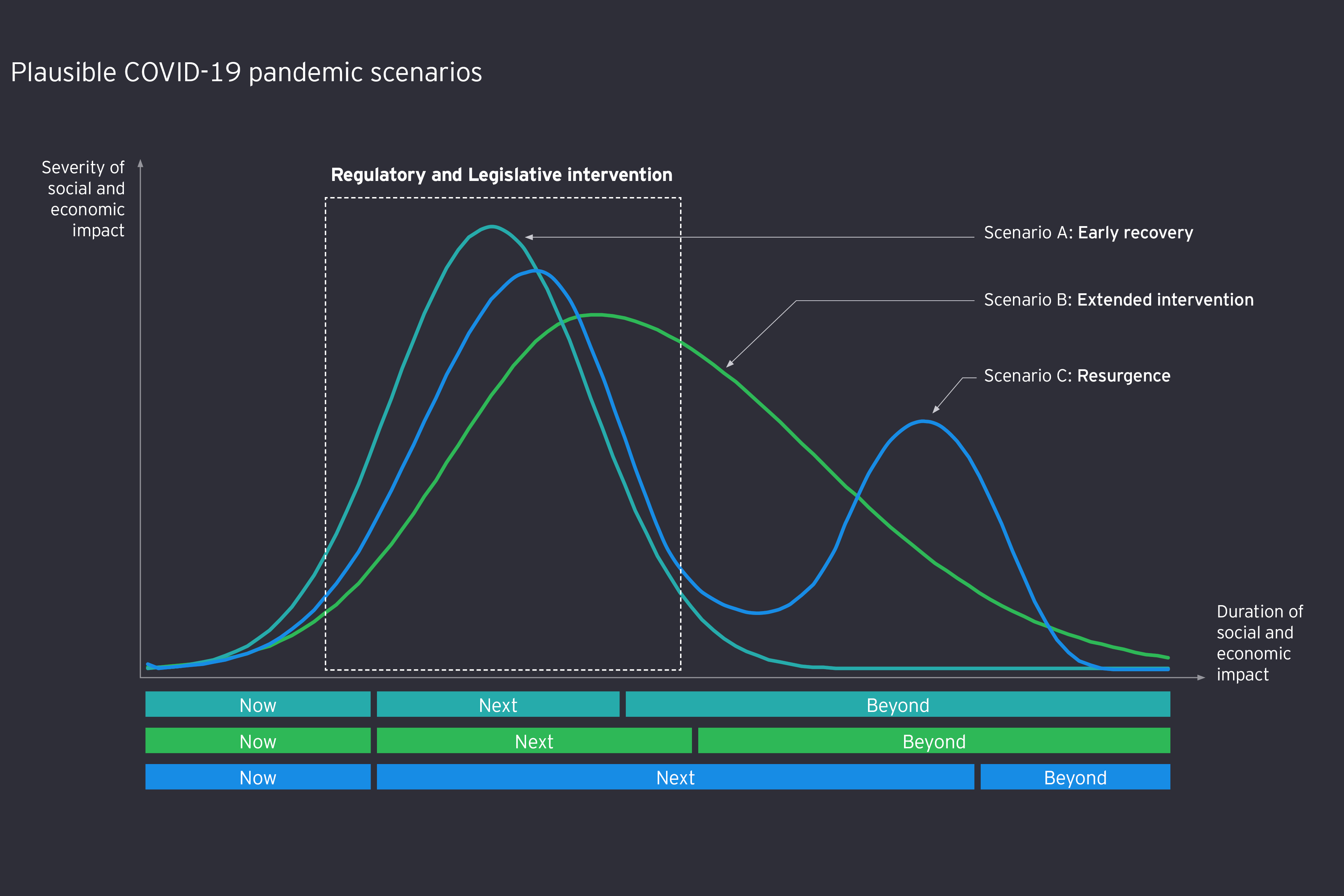Insurers are confronting a new environment, in which disruption from the COVID-19 pandemic presents both short- and long-term challenges and opportunities.
The COVID-19 pandemic has disrupted economies and communities around the world. From basic social customs and working arrangements to the global movement of goods and capital, how we live and work is undergoing dramatic change.
The insurance industry is no exception. The impact will be significant, although it’s impossible to say exactly how it will play out. Insurers are confronting a new environment, in which the COVID-19 pandemic creates short- and long-term disruption, while they focus on the critical questions right before them such as the safety of their people, solvency, operational effectiveness, regulatory changes, and general questions around what’s covered.
For an industry that was already undergoing significant change on multiple fronts (including a high degree of self-disruption), COVID-19 is likely to act as an accelerant to important trends. In that sense, it’s bringing the future into much clearer focus. Insurers’ long-term plans suddenly have near-term urgency, as if the future arrived sooner than expected.
Our view is that insurers must not lose sight of longer-term imperatives – even as they focus on meeting immediate-term customer needs, maintaining solvency and ensuring operational resilience. Insurers have made large-scale transformation investments – in redefining core value propositions, optimizing operations, updating technology, building a workforce of the future, and meeting new regulatory requirements. COVID-19 only underscores the importance of these programs and will likely spark rapid need for many of them.
In this article, we look at different recovery scenarios and provide high-level recommendations on what insurers can do to stabilize and advance in four critical areas of the business.
The story so far
As COVID-19 has shut down commerce around the world, interest rates and share prices have fallen as investors weigh the impact of the crisis on both sides of the balance sheet. Some regulators, such as EIOPA, urged insurers and reinsurers to temporarily suspend all discretionary dividend distributions and share buy backs. Many firms are following suit, while others are postponing annual meetings to reflect on the implications. Supervisors are requesting data more often and monitoring solvency closely. Ratings agencies are also re-evaluating business models.
On the upside, most insurers have implemented business continuity plans relatively smoothly, although some insurers have had issues. Challenges include the resilience of off-shore services and some third-party providers, as well as the ability to maintain a distribution cadence with customers who traditionally rely on face-to-face interaction.
Underwriting exposures have been mostly contained, with notable exceptions in travel, credit, event cancellation and health insurance.
So, what happens next?
Insurers will be looking for accurate and timely information as they evaluate their options in the face of broad uncertainty. There is a real risk that outdated or incorrect data could result in poor decision-making (as past paradigms for decision-making will not apply).
Based on the views of medical experts, economists, and industry analysts, we see three plausible pandemic scenarios. Again, the situation is fluid, but these views can help inform a dynamic planning process.
Scenario 1: Early recovery
In this scenario, strong public health response and the virus seasonality slow and contain the spread of COVID-19. Quarantines and travel restrictions drive sharp contraction in consumer spending, but the economy – supported by fiscal and monetary intervention – bounces back quickly. Continuity planning and remote technologies alleviate workforce disruptions. This is the best-case, “sigh-of-relief” scenario nearly everyone was hoping for but seems now less and less probable.
Scenario 2: Extended intervention
Countries struggle to contain the virus due to its virulence, as well as disorganized responses and variable enforcement of containment strategies and tactics. A global recession caused by declining consumer spending and corporate investment continues even as infection rates decline seasonally. As COVID-19 continues to spread globally, business supply chains are strained and the sustained contraction prompts layoffs and structural realignments. Technology constraints on remote workers further depress productivity. The “new normal” proves very challenging and a profound shift for individuals, businesses and communities around the world.
Scenario 3: Resurgence
Public health and economic measures are lifted as the virus abates, but then the general public and policymakers get caught off-guard by a secondary and even tertiary wave of infections. Public fatigue dampens political appetite for further market intervention and industry “bailouts.” Insurance operations struggle to keep up with customer activity and government action. Workforce attrition increases operational and cyber risks. This scenario, in particular, underscores the need for insurance executives to conceive their response strategies along three-time horizons – now, next and beyond.



